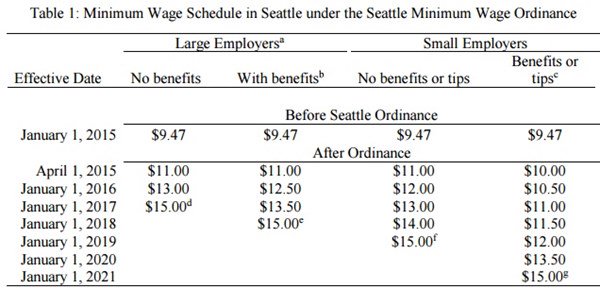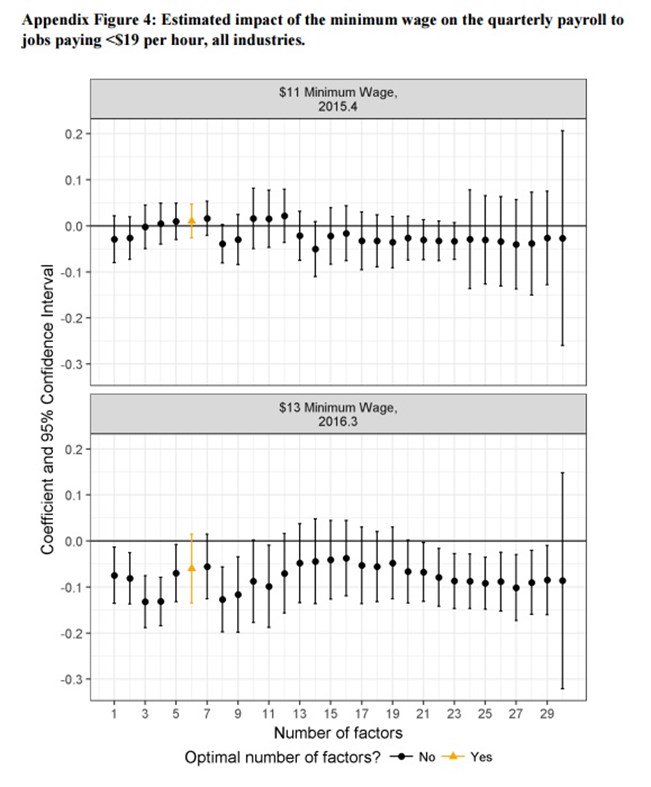Over the last several years, certain members of the Seattle City Council have embarked on a quest to make the city a socialist utopia. From raising the minimum wage to a whopping $15 an hour to instituting a ridiculous soda tax on consumers, Seattle loves to squeeze money from its residents and business owners in any way it can.
On Monday, the City Council continued this pattern by voting to implement a new “employment tax” on large Seattle-based businesses. The city is justifying this tax on major job creators like Amazon, Microsoft, and Boeing by blaming them for Seattle’s increase in homelessness. By the city’s logic, these companies have set the bar too high when it comes to employee wages. This has subsequently led to an increase in housing prices, which the city believes is responsible for the rise in homelessness.
By instituting this new tax, the city hopes to be able to build 1,780 low-income apartments over five years with the revenue collected. And while this tax was surely created with the best of intentions, the logic behind it falls flat. Punishing companies for voluntarily paying their employees generous salaries is so absurd, it sounds like a proposal straight from the mind of a Randian villain. But it also seems particularly ironic coming from the very same city officials who championed using force to incrementally raise the minimum wage just a few years ago.
And while the city has yet to acknowledge the detrimental impact this minimum wage increase has already had, they are also ignoring the potential consequences of this new tax. But if the city is not careful in considering both the seen and the unseen repercussions of this new employment tax, they might soon find that all the job creators have had enough.
Private Sector Opposition
Amazon has been one of the first companies to voice its opposition to this new employee “head” tax. And it is no surprise why. The tax would require every Seattle-based company with revenue over $20 million to pay 14 cents for each hour worked by Seattle residents. This adds up to about $275 per employee each year, which means that these companies will end up paying an estimated $47 million a year for five years. This is an outrageous demand for companies that are doing more for job and wealth creation than all of Seattle’s big-government programs put together. In fact, Amazon alone is responsible for creating over 40,000 jobs.
Amazon spokesman Drew Herdener issued a statement saying:
We are disappointed by today’s City Council decision to introduce a tax on jobs. While we have resumed construction planning for Block 18, we remain very apprehensive about the future created by the council’s hostile approach and rhetoric toward larger businesses, which forces us to question our growth here.”
Amazon also questioned the city’s own spending habits when Herdener mentioned that the city revenue growth “far outpaces the Seattle population increase over the same time period. The city does not have a revenue problem — it has a spending efficiency problem.”
But Amazon is not alone in their opposition to this tax. Starbucks, another Seattle-based company, also has some grave concerns over the city’s apparent spending problem. Public affairs chief John Kelley commented on the matter saying that the city “continues to spend without reforming and fail without accountability…”
A group of Seattle tech leaders also stand in opposition to the tax, but that has not done much to deter the city government.
While Mayor Jenny Durkan was initially opposed to the original employment tax proposal, which was asking for 26 cents per hour worked for each employee, she seemed more than satisfied with the version that passed this week. She stated:
This legislation will help us address our homelessness crisis without jeopardizing critical jobs. Because this ordinance represents a true shared solution, and because it lifts up those who have been left behind while also ensuring accountability and transparency, I plan to sign this legislation into law.”
But making such a bold claim about the impact, or lack thereof, that this new policy will have on job growth completely ignores the consequences that are not immediately seen.
The Seen and the Unseen
All actions have consequences, and when those actions are meant to control the economy, the consequences can have far reaching implications. In his essay “What Is Seen and What Is Not Seen,” French economist Frédéric Bastiat explained that all government actions have consequences that are both immediately seen, and also consequences that are unseen.
He writes:
In the economic sphere an act, a habit, an institution, a law produces not only one effect, but a series of effects. Of these effects, the first alone is immediate; it appears simultaneously with its cause; it is seen. The other effects emerge only subsequently; they are not seen; we are fortunate if we foresee them.
There is only one difference between a bad economist and a good one: the bad economist confines himself to the visible effect; the good economist takes into account both the effect that can be seen and those effects that must be foreseen.”
In the instance of the new Seattle employment tax, the “seen” is the revenue generated by the city through this new tax. But City Council members are so blinded by how this money can potentially decrease Seattle’s homeless problem that they fail to see how this tax may also have negative implications.
Unless you are the Federal Reserve, money is not simply printed out of thin air. And while the city government routinely ignores the economic realities that come with using other people’s money, the private sector understands that the money has to come from somewhere.
In order to pay for this new tax, which again taxes companies for each hour worked by employees, the obvious solution would be to lay off employees or cut back on employee hours, or both. Amazon is one of the largest employers in Seattle and forcing the company to lay off employees or trim the number of hours they can work will not serve to help the city’s homelessness problem. In fact, in many ways, it could be adding to it.
There is already a fear that automation will jeopardize human jobs. And while much of this fear is unfounded, by instituting a “head tax” on employers you are basically incentivizing them to move away from taxed labor and right into the arms of automation.
Additionally, between the minimum wage increase and the new employment tax, there is also the possibility that these companies get completely fed up with Seattle and choose to leave the city altogether. Layoffs, reduced hours, and companies leaving are just a few of the “unseen” consequences of this new policy.
If only the Seattle City Council was wise enough to read Bastiat, they might be able to save themselves from a world of economic trouble. But the fact of the matter is, many politicians and legislators see only the immediate consequences, and completely ignore the “unseen.” However, economic realities can be ignored forever, anyone who doubts this fact need only look at the city of Detroit.

Brittany Hunter
Brittany Hunter is an associate editor at FEE. Brittany studied political science at Utah Valley University with a minor in Constitutional studies.
This article was originally published on FEE.org. Read the original article.



 and this is okay if policy is based on some notion of greatest good for the greatest number. In other words, you can’t make an omelet without breaking a few eggs.
and this is okay if policy is based on some notion of greatest good for the greatest number. In other words, you can’t make an omelet without breaking a few eggs.


